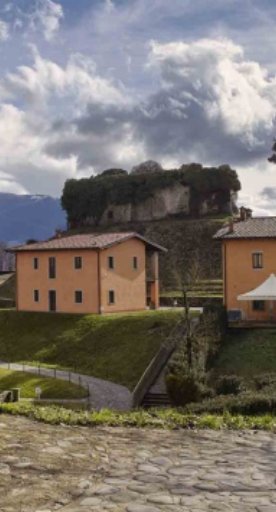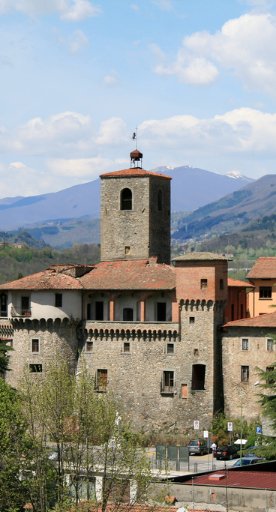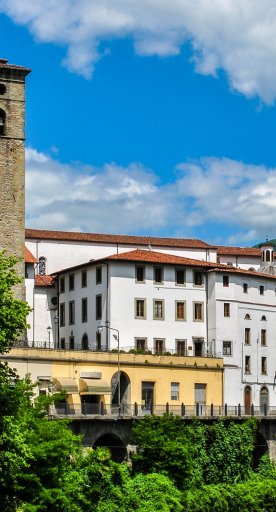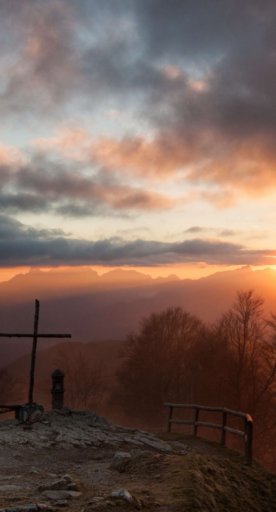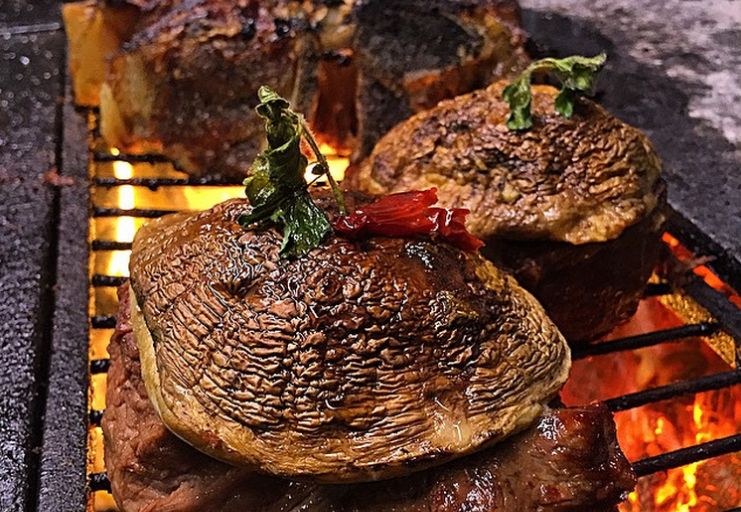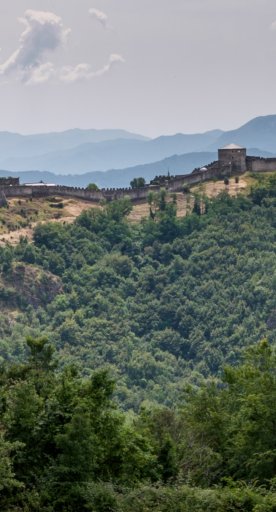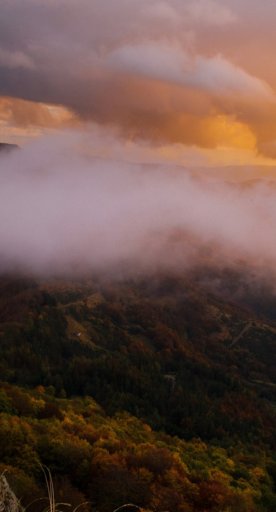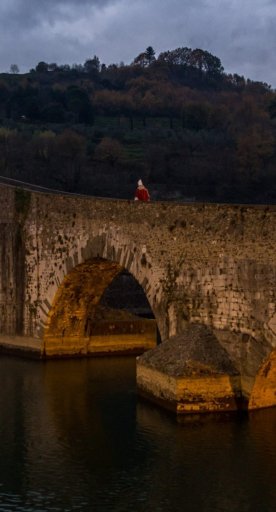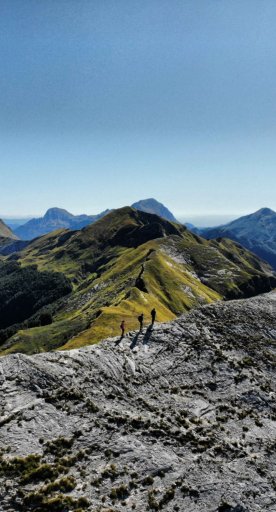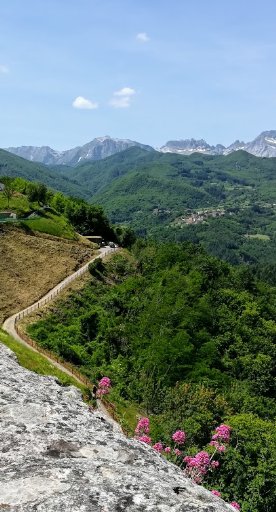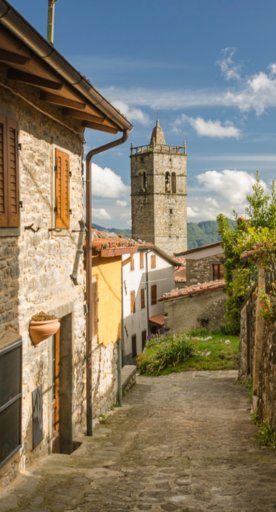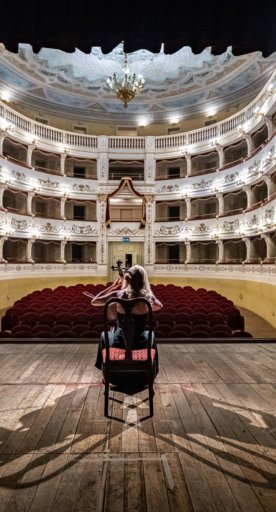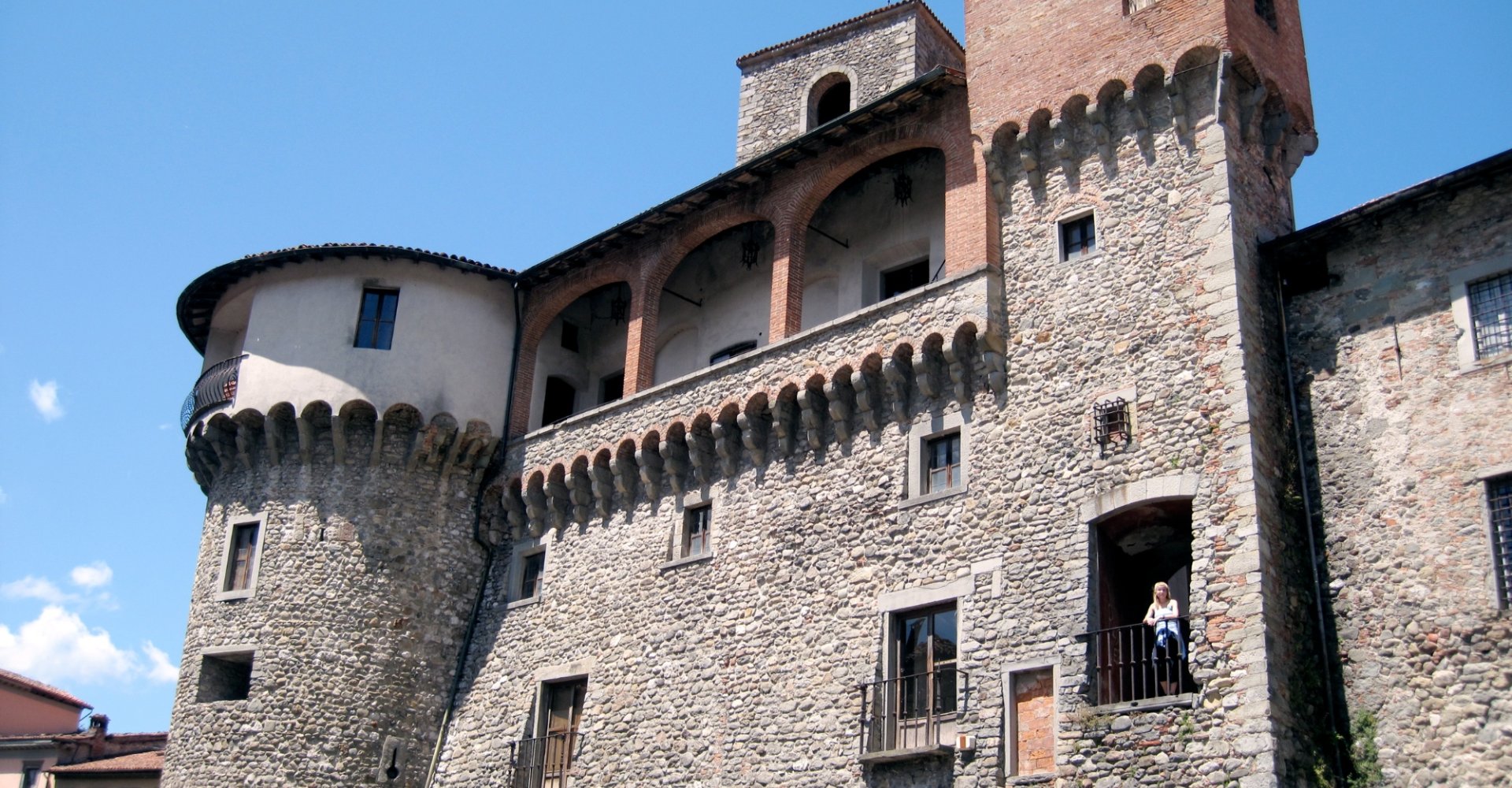
Castelnuovo di Garfagnana
Natural and historic beauty in the heart of the Garfagnana
Castelnuovo is considered both the capital and the green heart of the Garfagnana. It is located in the area to the north of the river Serchio, between the Apennines and the Apuan Alps, about forty kilometres from the city of Lucca. The schools, the library and the beautiful Teatro Vittorio Alfieri are just some of the elements that make this little town a cultural centre for the whole territory.
Among the many historic governors of the area, the standout character is the poet Ludovico Ariosto, who was sent here between 1522 and 1525 to oversee the Este family's share of the Garfagnana. He gave his name to the local fortress, which remains Castelnuovo's main attraction.
A bit of history
The first references to Castelnuovo go back to the year 740: fast-forward to 1300 and the town enjoyed great importance in the area ruled by Lucca. It was around this time that Castruccio Castracani ordered the building of a bridge to connect the citadel with the town of Cellabarotti, now called Santa Lucia. By 1430, exhausted from continuous fighting, the people of Castelnuovo threw off the Lucchese shackles and bent the knee to the house of Este, under whom they reached the peak of their prestige.
The first references to Castelnuovo go back to the year 740: fast-forward to 1300 and the town enjoyed great importance in the area ruled by Lucca. It was around this time that Castruccio Castracani ordered the building of a bridge to connect the citadel with the town of Cellabarotti, now called Santa Lucia. By 1430, exhausted from continuous fighting, the people of Castelnuovo threw off the Lucchese shackles and bent the knee to the house of Este, under whom they reached the peak of their prestige.
What to see in Castelnuovo Garfagnana
The Rocca Ariotesca (Ariosto's fortress), the symbol of Castelnuovo di Garfagnana, dominates the main square of the historic centre with its trapezoidal bulk. The original structure of the medieval castle has undergone various modifications over the years, the most significant of which was probably the addition of a terrace overlooking the square in 1675. The castle currently functions as the town hall, while containing the civic archives and the Garfagnana Archaeological Museum.
Also of great interest is the cathedral, devoted to San Pietro and San Paolo. Built in the early sixteenth century on the ruins of a ninth-century Romanesque church, it contains an altarpiece depicting St Joseph - a beautiful terracotta by the Della Robbia family - and a fifteenth-century wooden crucifix known as the Black Christ, whose marble frame is attributed to the workshop of Lucchese artist Matteo Civitali.
The Rocca Ariotesca (Ariosto's fortress), the symbol of Castelnuovo di Garfagnana, dominates the main square of the historic centre with its trapezoidal bulk. The original structure of the medieval castle has undergone various modifications over the years, the most significant of which was probably the addition of a terrace overlooking the square in 1675. The castle currently functions as the town hall, while containing the civic archives and the Garfagnana Archaeological Museum.
Also of great interest is the cathedral, devoted to San Pietro and San Paolo. Built in the early sixteenth century on the ruins of a ninth-century Romanesque church, it contains an altarpiece depicting St Joseph - a beautiful terracotta by the Della Robbia family - and a fifteenth-century wooden crucifix known as the Black Christ, whose marble frame is attributed to the workshop of Lucchese artist Matteo Civitali.
Nearby
In the town's immediate surroundings it is worth seeing the Mont'Alfonso Fortress which, built in the late 1500s, represents the House of Este's last throw of the dice. Bear in mind too that Castelnuovo is the ideal starting point from which to explore the natural beauties of the Orecchiella Park and the Apuan Alps Nature Reserve, by walking the many CAI paths.
In the town's immediate surroundings it is worth seeing the Mont'Alfonso Fortress which, built in the late 1500s, represents the House of Este's last throw of the dice. Bear in mind too that Castelnuovo is the ideal starting point from which to explore the natural beauties of the Orecchiella Park and the Apuan Alps Nature Reserve, by walking the many CAI paths.
Events
Of the events organised for August the most important two to remember are the Settimana del Commercio (Trade Week), which puts on a range of exhibitions, shows and spectacles for ten days around Ferragosto, and the Magic and Illusionism Festival. But the biggest moment in the town's cultural calendar is the Festival of the International Academy of Music of New York, which, for June and July, brings some of the most prestigious chamber musicians on the international scene into Castelnuovo.
Of the events organised for August the most important two to remember are the Settimana del Commercio (Trade Week), which puts on a range of exhibitions, shows and spectacles for ten days around Ferragosto, and the Magic and Illusionism Festival. But the biggest moment in the town's cultural calendar is the Festival of the International Academy of Music of New York, which, for June and July, brings some of the most prestigious chamber musicians on the international scene into Castelnuovo.
Typical Dishes and Produce
Castelnuovo boasts a great range of traditional foods, but we recommend that you try the soups, the cakes and the salads. These are all made with PGI-certified Garfagnana spelt flour, an ancient cereal that was fundamental even to the Romans' diet. It has been grown for centuries in Garfagnana, and no chemicals are used to treat it. Another pride of the region is Neccio chestnut flour, PDO-certified, which also underpins a number of local recipes.
These recipes include a polenta made with Neccio chestnut flour, as well as manafregoli (Neccio flour cooked in milk), castagnaccio chesnut cake and Garfagnana potato bread.
Castelnuovo boasts a great range of traditional foods, but we recommend that you try the soups, the cakes and the salads. These are all made with PGI-certified Garfagnana spelt flour, an ancient cereal that was fundamental even to the Romans' diet. It has been grown for centuries in Garfagnana, and no chemicals are used to treat it. Another pride of the region is Neccio chestnut flour, PDO-certified, which also underpins a number of local recipes.
These recipes include a polenta made with Neccio chestnut flour, as well as manafregoli (Neccio flour cooked in milk), castagnaccio chesnut cake and Garfagnana potato bread.
